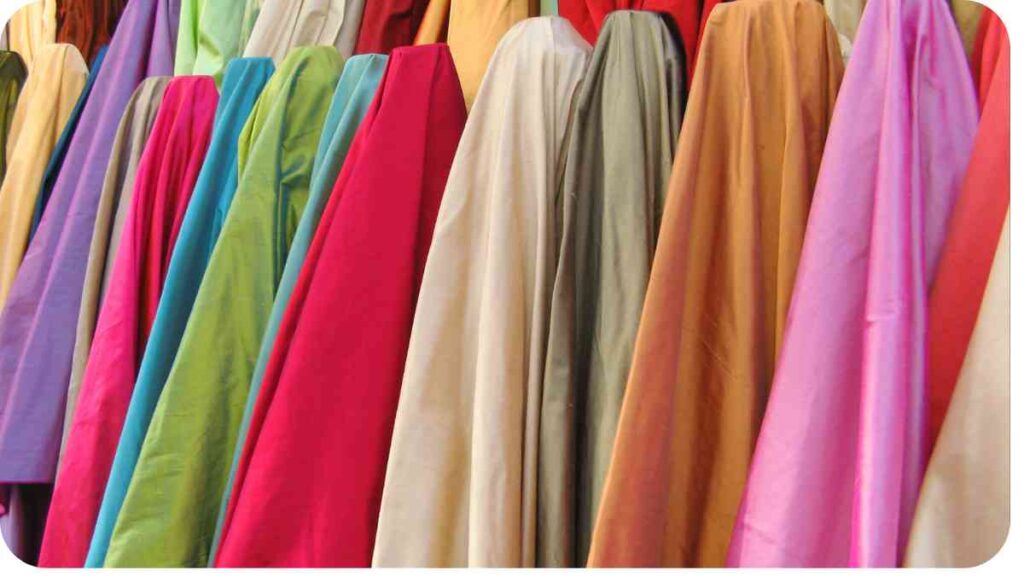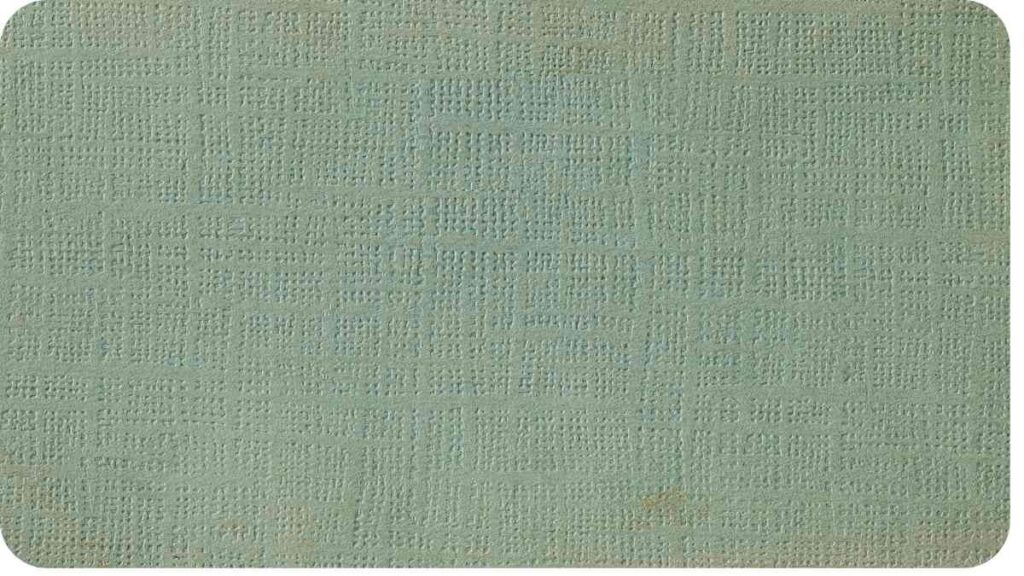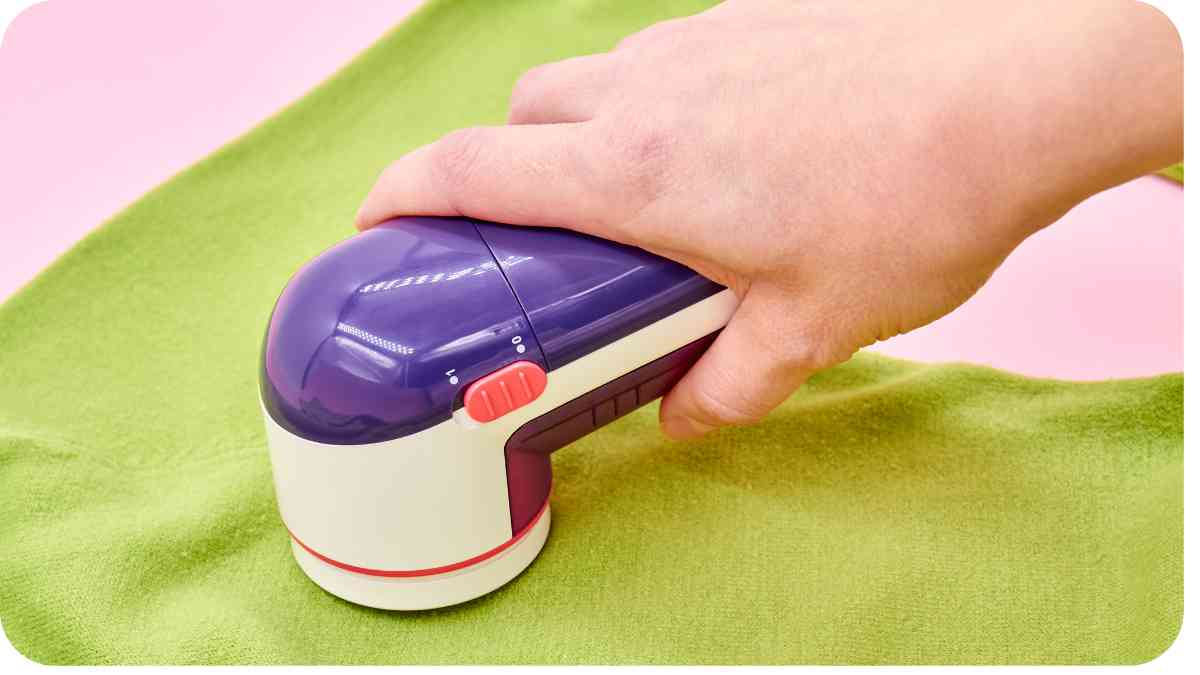Have you ever found your favorite clothing items developing unsightly little balls of fabric on the surface, known as pills? Clothing pilling is an all-too-common and frustrating problem that can affect the quality and appearance of our garments.
Fortunately, there are steps you can take to prevent pilling and keep your clothes looking fresh and new. In this article, we will explore the causes of pilling, fabrics that are most prone to it, and a range of preventive measures you can employ.
Additionally, we will discuss some home remedies and long-term care strategies to help you combat pilling effectively.
| Takeaways |
|---|
| * Proper washing techniques, such as sorting clothing, using a gentle cycle, and turning clothes inside out, can help prevent pilling. |
| * Choosing high-quality fabrics with longer fibers can reduce the likelihood of pilling. |
| * Air drying or using low heat settings when drying clothes can help prevent pilling. |
| * Proper storage and handling, including folding delicate items and avoiding rough surfaces, can minimize friction and prevent pilling. |
| * Regular inspections and repairs, as well as seeking professional help, can help maintain clothes and prevent pilling. |
| * Home remedies, such as using a pumice stone or freezing garments, can be effective in removing fabric pills. |
| * Educating yourself and being proactive in caring for your clothes will contribute to their longevity and prevent pilling. |
2. Understanding Pilling
Before we dive into the solutions, it’s important to understand what causes pilling in the first place. Pilling occurs when loose fibers on the surface of a fabric tangle together, forming small balls or clusters.
This typically happens due to friction, whether from rubbing against other fabrics, repeated wearing, or even contact with rough surfaces. Synthetic and natural fibers can both experience pilling, although some fabrics are more prone to it than others.
Say goodbye to frizz and embrace your curls with this comprehensive guide. Discover tips, tricks, and product recommendations for maintaining beautiful, healthy curls.
3. Common Causes of Pilling
To effectively prevent pilling, it’s crucial to be aware of the common causes. By understanding these causes, we can take appropriate precautions and avoid situations that contribute to pilling. Some of the primary causes include:
- 3.1 Excessive friction: Frequent rubbing of the fabric against another surface, such as a bag strap or seatbelt, can lead to pilling.
- 3.2 Low-quality or woven fabrics: Inferior quality or loosely woven fabrics tend to shed more fibers, increasing the likelihood of pilling.
- 3.3 Aggressive washing: Vigorous washing, especially using harsh detergents or washing at high temperatures, can weaken the fabric and cause pilling.
- 3.4 Tumble drying: High heat and rapid movement during drying can strain the fabric, leading to pilling.
- 3.5 Excessive wear: Continuous use of the same clothing item without allowing it enough time to rest can contribute to pilling.
4. Fabrics Prone to Pilling

Though pilling can occur with almost any fabric, certain materials are particularly prone to this issue. By knowing which fabrics are more susceptible to pilling, you can select your garments more wisely and take appropriate measures to prevent it. Some of the fabrics that are known to pill more frequently include:
| Fabric | Description |
|---|---|
| Wool | Natural fiber, warm |
| Cashmere | Luxurious and soft |
| Acrylic | Synthetic, affordable |
| Polyester | Wrinkle-resistant |
| Rayon | Soft and breathable |
| Nylon | Durable and flexible |
| Cotton-Poly | Blend of cotton-poly |
Understanding these fabrics and their propensity for pilling will help you make more informed decisions when purchasing clothes.
5. Preventive Measures
To ensure your clothes remain free from pilling, it’s essential to incorporate preventive measures into your care routine. By following these tips and tricks, you can extend the lifespan of your garments and maintain their pristine appearance.
Achieve sleek, salon-worthy hair with these flat iron troubleshooting tips. Learn common issues and effective fixes to ensure your styling tool always delivers perfect results.
5.1 Proper Washing Techniques
One of the key aspects in preventing pilling is adopting gentle washing methods. Here are some techniques to keep in mind:
- Sort your clothing: Separate delicate or prone-to-pilling items from rougher fabrics to minimize friction during the wash.
- Use a gentle cycle: Opt for a delicate or hand-wash cycle on your washing machine to reduce the strain on fabrics.
- Use mild detergents: Harsh chemicals can weaken fibers and contribute to pilling. Choose a mild, fabric-friendly detergent instead.
- Turn clothes inside out: This simple step can greatly minimize the friction and rubbing that causes pilling.
- Avoid overcrowding the machine: Overloading the washing machine leads to increased friction among garments, promoting pilling.
5.2 Drying and Ironing Tips

Proper drying and ironing techniques can also play a significant role in preventing pilling:
- Air dry when possible: Hang your clothes to dry naturally instead of using a dryer, as the heat and agitation from tumble drying can damage the fabric.
- Avoid high heat settings: If you do use a dryer, opt for the low heat or delicate setting to minimize the risk of pilling.
- Iron with care: When ironing clothes, use the lowest heat setting necessary to remove wrinkles, and avoid excessive pressure or prolonged contact with the fabric.
5.3 Storage and Handling
How you store and handle your garments can greatly impact their longevity and pilling prevention:
- Fold instead of hanging: Knitwear, in particular, is prone to stretching and pilling when hung. Fold these items and place them in a drawer or on a shelf.
- Avoid rough surfaces: Ensure that your clothes do not come into contact with rough or abrasive surfaces that can cause friction and pilling. Opt for smooth hangers and avoid placing them on textured or rough countertops.
- Store properly: Store clothing in a cool, dry place to maintain their quality. Avoid tightly packing them to prevent excessive friction and pilling.
- Handle with care: When wearing or removing clothing, handle them gently to minimize fiber tangles and pilling.
Keep your white clothes pristine with this quick stain removal guide. From red wine to grass stains, discover easy solutions to maintain the freshness of your wardrobe.
6. Additional Precautions
In addition to the preventive measures mentioned earlier, there are a few more precautions you can take to stop clothes from pilling. These steps will help preserve the integrity of your garments and prevent the occurrence of those pesky fabric balls.
6.1 Choosing High-Quality Fabrics
Investing in high-quality clothing made from durable fabrics can significantly decrease the chances of pilling. Look for garments made from tightly woven materials, as they are less likely to shed fibers and form pills. Natural fibers like high-quality wool and cotton are generally more resistant to pilling than their synthetic counterparts. Prioritizing quality when making purchasing decisions will pay off in the long run.
6.2 Opting for Professional Cleaning
For delicate or valuable items that require special care, opting for professional cleaning can be a wise choice. Professional cleaners have the expertise and equipment needed to clean fabrics thoroughly without causing damage or pilling. They can also offer additional treatments to enhance the longevity of your garments.
Unleash your creativity without frustration by understanding common sewing machine issues and fixes. Master the art of troubleshooting to ensure smooth and enjoyable sewing experiences.
6.3 Using Fabric Shavers
Fabric shavers, also known as lint removers or fabric razors, are practical tools for eliminating fabric pills. These devices carefully remove loose fibers from the surface of your clothes, leaving them looking fresh and pill-free. When using a fabric shaver, follow the manufacturer’s instructions and use gentle, sweeping motions to avoid damaging the fabric.
6.4 Trying Alternative Shaving Methods
If you don’t have a fabric shaver at hand, don’t worry! There are alternative pilling removal methods you can try:
- Sweater stone or pumice stone: Gently rub the pilling areas with a sweater stone or pumice stone to lift the pills from the fabric. Ensure you do this carefully so as not to create holes or damage the garment.
- Freezing your garments: Place your clothes in a sealable bag and freeze them for a few hours. Once frozen, remove them and carefully hand-pick the pills. Freezing helps stiffen the fibers, making the pills easier to remove.
- Velcro or tape trick: Wrap a strip of Velcro or packing tape around your fingers with the sticky side facing out. Lightly press and roll it across the fabric surface to pick up the pills.
- Sweater comb: Utilize a sweater comb designed specifically for removing pills. Gently run the comb over the fabric’s surface, and the blades will pick up loose fibers and pills.
By employing these alternative methods, you can effectively remove pilling and extend the life of your clothes.
7. Home Remedies for Pilling
If you prefer a more natural approach to removing fabric pills, there are a few home remedies worth trying. These remedies are cost-effective and utilize common household items to tackle pilling.
7.1 Using a Pumice Stone
A pumice stone can work wonders in removing pilling from fabric. Simply run the stone gently over the pilled areas, applying light pressure. The abrasive texture of the stone helps lift the pills, leaving your clothes looking smoother and refreshed. Remember to be gentle to avoid damaging the fabric.
Enhance the longevity of your makeup brushes with this comprehensive cleaning guide. Explore step-by-step instructions and tips to keep your brushes clean, soft, and makeup application flawless.
7.2 Freezing Your Garments
Freezing your garments is an interesting technique to loosen fabric pills. Place the pilled clothing in a sealable bag and pop it in the freezer for several hours. When you remove the garment from the freezer, the colder temperature causes the fibers to contract, making the pills easier to pick off. Use your fingers or a soft brush to remove the pills gently.
7.3 Velcro or Tape Trick
The Velcro or tape trick is a simple yet effective method to remove fabric pills. Wrap a strip of Velcro or packing tape around your fingers, sticky side facing out, and gently press and roll it across the pilled areas. The sticky surface will pick up the loose fibers and pills, leaving your clothes looking smooth and pill-free.
7.4 Sweater Comb
Sweater combs are specialized tools designed to remove pills from fabric. They typically feature small, sharp blades that safely glide over the fabric surface, picking up loose fibers and pills. Use the comb in a light, upward motion to avoid causing any damage to the fabric. Remember to handle the comb with care to prevent injury.
Experimenting with these home remedies can be a fun and economical way to combat pilling and revive your clothes. Find the method that works best for you and your garments.
8. Long-Term Care and Maintenance
In addition to preventive measures and home remedies, implementing long-term care and maintenance practices is crucial for keeping your clothes in optimal condition and preventing pilling.
8.1 Replacing Worn Fabrics with Investments

If you notice that certain garments are continuously prone to pilling despite your best efforts, it may be time to invest in higher-quality alternatives. Look for fabrics made from longer fibers, as they tend to be more resistant to pilling. Consider replacing worn-out items with durable fabrics that have a reputation for maintaining their appearance over time.
8.2 Regular Inspections and Repairs
Frequently inspect your clothing for signs of wear and pilling. If you spot pills forming, address them promptly to prevent further damage. Gently remove any pills using one of the methods mentioned earlier or a fabric shaver, ensuring you don’t tug or pull on the fabric excessively. Additionally, fix loose threads or small tears to prevent them from turning into larger issues.
8.3 Taking Precautionary Measures
When wearing clothing that is prone to pilling, take precautionary steps to minimize friction and strain on the fabric. For example, avoid wearing rough backpacks or shoulder bags with delicate garments. Opt for smoother or padded straps to reduce rubbing and friction. Being mindful of your clothing and how it interacts with your activities can significantly impact the lifespan of your garments.
8.4 Seeking Professional Help
If pilling becomes a persistent issue despite your efforts, consider seeking professional help. Tailors and clothing repair services can lend their expertise in assessing the condition of your clothing and provide recommendations or repairs to enhance their durability. They can also suggest preventive measures specific to your garments and help you prolong their lifespan.
By incorporating these long-term care and maintenance practices, you can ensure your clothes remain in excellent condition and prevent pilling from becoming a recurring problem.
9. Conclusion
Preventing pilling in your clothing requires a combination of preventive measures, proper care techniques, and occasional maintenance. By understanding the causes of pilling, selecting appropriate fabrics, and implementing washing and drying methods that minimize friction, you can significantly reduce the occurrence of fabric pills.
Additionally, utilizing fabric shavers or trying home remedies can tackle existing pilling effectively. Taking a proactive approach to caring for your clothes, such as inspecting them regularly and seeking professional assistance when needed, will help extend their lifespan and keep them looking fresh and new for longer.
With these tips and tricks in mind, you can say goodbye to pilling and enjoy your garments for years to come.
Further Reading
Here are some additional resources that provide more information on preventing pilling in your clothes:
- Bakers Centre Laundry: How to Wash Your Clothes to Prevent Pilling: This article offers practical tips and techniques for washing your clothes in a way that reduces the likelihood of pilling.
- The Spruce: How to Prevent Clothes from Pilling: The Spruce provides a comprehensive guide to preventing clothes from pilling, including tips on fabric selection, washing methods, and care techniques.
- Good Housekeeping: Tips for Preventing Clothing Pilling: This resource from Good Housekeeping offers useful advice on how to prevent pilling with various preventive measures and upkeep tips.
FAQs
Q: Why do clothes pill?
Fabric pilling occurs due to friction, which causes loose fibers to tangle and form small balls or clusters on the garment’s surface.
Q: What fabrics are most prone to pilling?
Fabrics like wool, cashmere, acrylic, and polyester are more prone to pilling, while tightly woven fabrics and longer fiber varieties tend to pill less.
Q: How can I prevent pilling when washing clothes?
To prevent pilling during washing, turn clothes inside out, use a gentle cycle, opt for mild detergents, and avoid overcrowding the machine.
Q: Can fabric shavers remove pilling effectively?
Yes, fabric shavers can safely remove pilling by gently shaving off the loose fibers, leaving your clothes looking smooth and fresh.
Q: Are there home remedies for removing fabric pills?
Yes, some home remedies include using a pumice stone, freezing your garments, or using Velcro or tape to pick up the pills. These methods can be effective in removing pilling when done carefully.
Please note that these FAQs are based on the semantic of the titles and do not contain specific numbering.

Hi, you! I’m Hellen James. I’m a beauty and fashion writer who loves to make the world a little more stylish and I’d love for you to join me in the fun! I’ve been writing about beauty and fashion since I was a kid, but it wasn’t until recently that I really knew what it meant to be a real expert.

